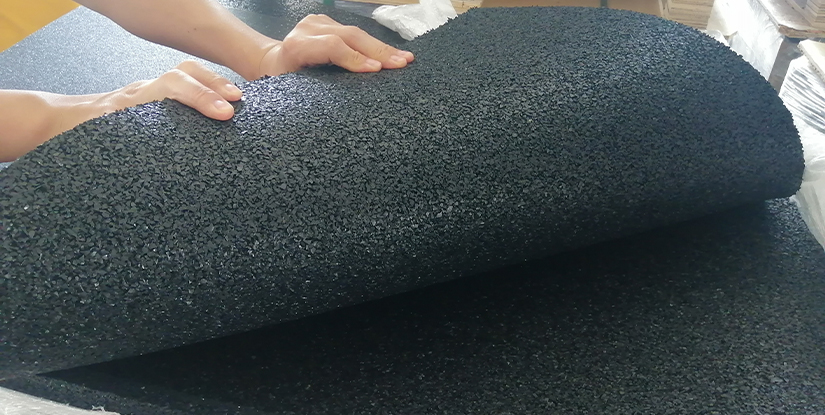Non-Slip Exercise Mat: Stability, Durability & Care

Why Choose a Non-Slip Exercise Mat
A non-slip exercise mat is an essential piece of equipment for anyone prioritizing performance, comfort, and safety. Whether practicing yoga, pilates, bodyweight training or high-intensity interval sessions, a mat with reliable traction prevents slippage, reduces injury risk, and provides a stable surface for proper form.
Key Benefits
- Enhanced stability and balance for dynamic movements.
- Reduced risk of joint strain and soft tissue injuries.
- Improved confidence to execute advanced poses and transitions.
- Hygienic barrier between user and floor with easy cleaning.
- Additional cushioning to protect knees, spine and wrists.
Materials and Construction
The performance of a non-slip exercise mat depends largely on materials and surface design. Common materials include TPE (thermoplastic elastomer), natural rubber, PVC, and closed-cell EVA foam. Each option balances grip, cushioning, durability, and environmental impact differently.
Material Characteristics
- TPE: Lightweight, good grip, recyclable in some cases, moderate durability.
- Natural rubber: Excellent traction and resilience, eco-friendlier but heavier and may have an initial odor.
- PVC: Durable and affordable with strong grip, but less eco-friendly and may off-gas.
- Closed-cell EVA: Moisture-resistant and cushioned, suitable for general workouts.
Design Features That Improve Grip
Manufacturers enhance non-slip performance through surface textures, raised patterns, and two-layer constructions. Look for mats with micro-textured surfaces, directional patterns that channel moisture away, and dual-density cores that combine firmness for balance with softness for comfort.
How to Choose the Right Mat
Selecting the correct mat requires balancing use case, body type, and personal preferences. Consider the following criteria when choosing a non-slip exercise mat.
Selection Checklist
- Thickness: 3–6 mm for yoga and pilates; 6–12 mm for extra joint protection during floor exercise.
- Surface Grip: Test both dry and slightly damp conditions; new mats may improve after a break-in period.
- Size: Standard mats are 68–72 inches long; taller users should choose longer lengths.
- Weight and Portability: Heavier rubber mats offer excellent grip but can be less portable.
- Environmental Considerations: Opt for natural rubber or recyclable TPE if sustainability is a priority.
Care and Maintenance
Proper care extends a mat's lifespan and preserves grip. Routine cleaning removes oils and sweat that diminish traction. Simple maintenance practices keep the mat performing optimally.
Cleaning Guidelines
- Wipe with a damp cloth after each session to remove surface sweat and dirt.
- Use a mild soap solution or a manufacturer-approved cleaner for periodic deep cleaning.
- Air dry flat and avoid direct sunlight to prevent material degradation.
- Roll, do not fold, to prevent creases that can affect traction.
- Replace mats when wear patterns or thinning reduce grip and cushioning.
Practical Use Cases
Non-slip mats suit a wide range of activities. High-friction surfaces are especially helpful for standing balance poses, transitions in vinyasa yoga, and exercises requiring secure hand and foot placement such as mountain climbers, planks, and push-ups.
Recommendations by Activity
- Yoga: 3–5 mm textured mat for grip with moderate cushioning.
- Pilates: 5–8 mm for extra joint support and stability.
- HIIT and bodyweight training: 6 mm or more with a dense top layer for traction and shock absorption.
- Rehabilitation: Thicker, softer mats (8–12 mm) that maintain non-slip performance under low-intensity movement.
Safety and Best Practices
A non-slip mat reduces risk but does not eliminate it. Ensure the mat is placed on a flat, dry surface. Replace the mat when surface patterns wear smooth. Combine a quality mat with proper footwear or barefoot technique suited to the discipline, and maintain good personal hygiene to minimize slipping from sweat.
Frequently Asked Questions
- What makes a mat non-slip? - Surface texture and material composition that increase friction between the skin and mat.
- Is natural rubber better than PVC? - Natural rubber offers superior grip and eco-benefits; PVC can be more durable and affordable.
- How thick should my mat be? - 3–6 mm for yoga; 6 mm+ for more cushioning in floor workouts.
- Can I use the mat outdoors? - Some mats are suitable, but UV exposure and rough surfaces can degrade material.
- How do I remove odors from a new mat? - Air out, wipe with mild soap, and avoid heat; natural rubber may require longer airing.
- How often should I clean the mat? - Wipe after each use; deep clean every 1–4 weeks depending on usage.
- Will sweat reduce grip? - Yes; regular cleaning and textured surfaces help maintain traction.
- Are thicker mats less stable? - Excessive thickness can reduce balance for standing poses; choose based on activity.
- When should I replace my mat? - Replace when traction or cushioning significantly degrades or visible wear appears.

